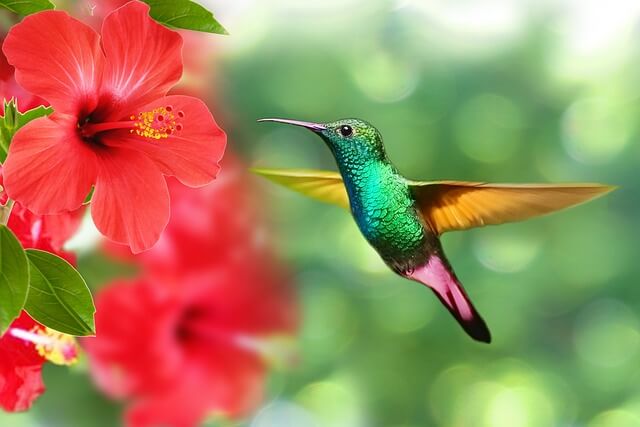Hummingbirds are consuming alcohol through fermented sugar in nectar and feeders, according to a study by University of California, Berkeley. The study found that hummingbirds do not shy away from sugar water containing up to 1% alcohol but drink half as much if it contains 2%.
Backyard hummingbird feeders and nectar-filled flowers, where yeast ferments sugar into alcohol, are unknowingly serving alcohol to hummingbirds. UC Berkeley biologist Robert Dudley sought to understand how much alcohol hummingbirds consume, and if they are attracted or repelled by it.
Dudley stated, “Hummingbirds are eating 80% of their body mass a day in nectar.” He continued, “Most of it is water and the remainder sugar. But even if there are very low concentrations of ethanol, that volumetric consumption would yield a high dosage of ethanol, if it were out there. Maybe, with feeders, we’re not only farming hummingbirds, we’re providing a seat at the bar every time they come in.”
The research, published in Royal Society Open Science, revealed that hummingbirds willingly drink from sugar water containing up to 1% alcohol. However, they consumed only half the volume when the sugar water had 2% alcohol.
Dudley noted, “They’re consuming the same total amount of ethanol, they’re just reducing the volume of the ingested 2% solution. So that was really interesting. That was a kind of a threshold effect and suggested to us that whatever’s out there in the real world, it’s probably not exceeding 1.5%.”
Testing alcohol level in sugar water from a feeder over two weeks showed a concentration of about 0.05%. Dudley explained, “Now, 0.05% just doesn’t sound like much, and it’s not. But again, if you’re eating 80% of your body weight a day, at .05% of ethanol you’re getting a substantial load of ethanol relative to your body mass.” He added that hummingbirds metabolize alcohol quickly, and they’re “not getting drunk.”
The research is part of a broader project examining alcohol in animal diets, particularly in the tropics. Dudley and his team aim to understand the role of alcohol, whether it affects behavior, feeding, or attraction to flowers containing alcohol.
He added, “This is the first demonstration of ethanol consumption by birds, quote, in the wild. I’ll use that phrase cautiously because it’s a lab experiment and feeder measurement. But the linkage with the natural flowers is obvious. This just demonstrates that nectar-feeding birds, not just nectar-feeding mammals, not just fruit-eating animals, are all potentially exposed to ethanol as a natural part of their diet.”
Dudley, who authored a book on human attraction to alcohol, believes studying the biology of alcohol consumption in animals can provide insights into human alcohol consumption patterns.
If our reporting has informed or inspired you, please consider making a donation. Every contribution, no matter the size, empowers us to continue delivering accurate, engaging, and trustworthy science and medical news. Independent journalism requires time, effort, and resources—your support ensures we can keep uncovering the stories that matter most to you.
Join us in making knowledge accessible and impactful. Thank you for standing with us!

